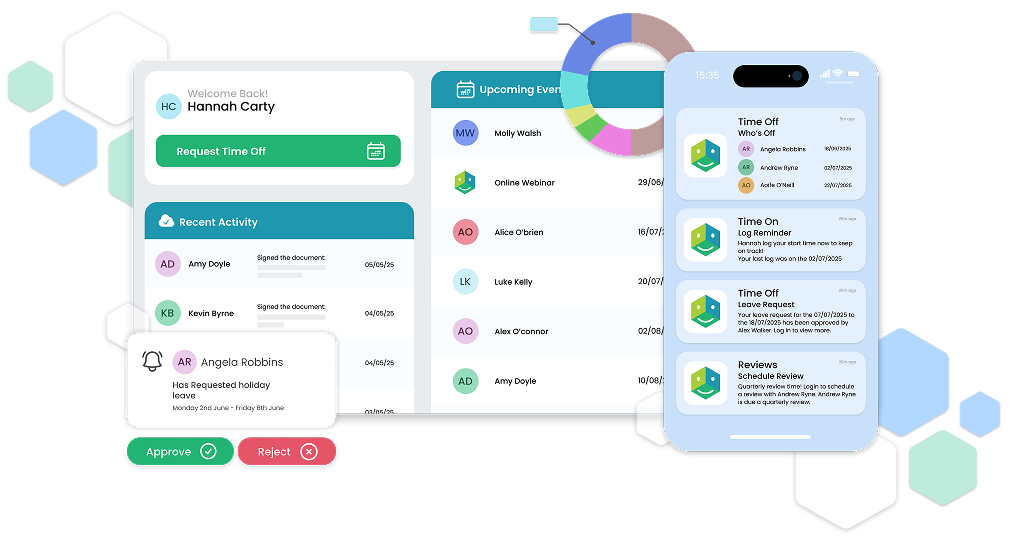In an era where compliance, data security, and employee experience matter more than ever, organisations must evolve or risk falling behind. This is the story of a mid-sized technology company that, faced with legal pressure and operational gaps, embraced transformation. Their journey from informal practices to a structured, compliant, and tech-enabled HR function offers a compelling lesson in the power of strategic investment and expert support.
The Challenge: Legacy Habits Meet Modern Expectations
Despite being well-established, with around 200 employees, the organisation had never implemented a formal HR department. For years, it operated on trust, tradition, and fragmented processes. There was no single source of truth for employee data, and HR responsibilities were scattered across teams without structure or accountability.
That status quo was shattered when the company was issued a judicial directive: establish clear HR policies, ensure legal compliance, and build a reliable, professional HR infrastructure. It wasn’t just a wake-up call—it was an existential challenge!
The risks were real:
- Manual record-keeping led to errors and inconsistent employee data.
- Managers had no formal HR training or policy framework to support decision-making.
- Compliance with employment legislation was patchy and reactive, not proactive.
The leadership team recognised that patchwork fixes wouldn’t cut it, deciding it was time for a systemic change.
The Turning Point: Embracing a Human Resources Information System (HRIS)
Rather than build HR infrastructure piece by piece, the company took a bold step: implement a robust, centralised HRIS. This wasn’t just about introducing new software. It was about overhauling how the business understood and delivered its people function.
Crucially, they brought in external HR consultancy support to manage the implementation. This proved essential. The internal team lacked both the bandwidth and the expertise to lead such a significant change while managing day-to-day operations.
The project unfolded in deliberate, structured phases:
1. Laying the groundwork
The initial focus was on auditing current processes and collecting disparate data from various departments. Surprisingly, Excel emerged as an unlikely hero, a simple but powerful tool to clean, validate, and prepare employee records for migration. This phase revealed just how fragmented the current system had been.
2. System selection and customisation
A rigorous evaluation of HRIS platforms followed. The chosen system needed to meet the organisation’s specific needs: compliance, automation, data security, and scalability. The consultant worked closely with software vendors and internal stakeholders to tailor the system before launch.
3. Pilot, rollout, and review
The company ran a controlled pilot in one department, fine-tuned the system based on feedback, and then launched a phased rollout across all teams. Training was embedded at every stage, not just on how to use the software, but also on the broader HR policies it supported.
The Outcome: A Resilient, compliant, and empowered HR function. The transformation was nothing short of remarkable.
Key achievements included:
- Accurate, accessible employee records – No more paper trails or missing files. All data is now centralised, secure, and GDPR-compliant.
- Automation of core processes – Routine tasks like onboarding, absence management, and performance tracking were streamlined, freeing up time for strategic HR work.
- Improved legal compliance – Policies are up-to-date, consistently applied, and transparent. Managers now have clear guidance for handling HR matters fairly and legally.
- Empowered managers and employees – With access to self-service tools and real-time data, managers can make better-informed decisions, and employees can take more ownership of their information.
This wasn’t just a technological win. It was a cultural shift. The business moved from reactive fire-fighting to proactive planning — from isolated workarounds to an integrated, accountable system.
The Role of External HR Expertise
This success would not have been possible without specialist support. The external consultant brought not only deep technical knowledge but also a neutral, experienced perspective. They were able to challenge assumptions, manage resistance, and ensure best practices were followed, all while keeping the project on time and within budget.
For any organisation navigating similar challenges, this story is a clear reminder: you don’t have to do it alone, but you do have to do it properly.
Time to Rethink HR?
Too often, HR is seen as a back-office function, only visible when things go wrong. But done right, it becomes the backbone of your organisation—a driver of culture, compliance, and business success.
If your HR systems are outdated, if your managers are unclear on policy, or if compliance feels like a moving target, it’s time to ask: what’s the cost of staying the same?
The future of HR is strategic, data-driven, and human-centred. With the right tools and the right expertise, you can build a people function that does more than just keep the lights on. It powers your organisation forward.
Guest contributor
This article was written by Rabia Mirza, CEO of Leadership & HR Solutions, based in Dublin. She is an accredited HR Consultant, a top-rated Executive Coach and Trainer.
Rabia believes that by developing leadership skills and efficient HR procedures, organisations can help mitigate risk, enhance performance and improve an organisation’s EBITDA. Her services include Executive Coaching, People Management training and Outsourced HR Consulting.
Rabia has extensive knowledge of HR and leadership development across industrial manufacturing and logistics sectors. For more than 20 years, she has held senior roles in Human Resources, developing leadership teams, mitigating risk and creating efficiencies in businesses. Her experience extends from Ireland to Canada, and the USA, managing multiple sites globally.
Rabia has been rated as one of the Top Coaches in Ireland in 2025, 2024 and 2023. In addition, she is Chairwoman for Women in Logistics & Transport for Ireland. Her articles and webinars are regularly featured in business and industry magazines, organisations, and radio stations.









